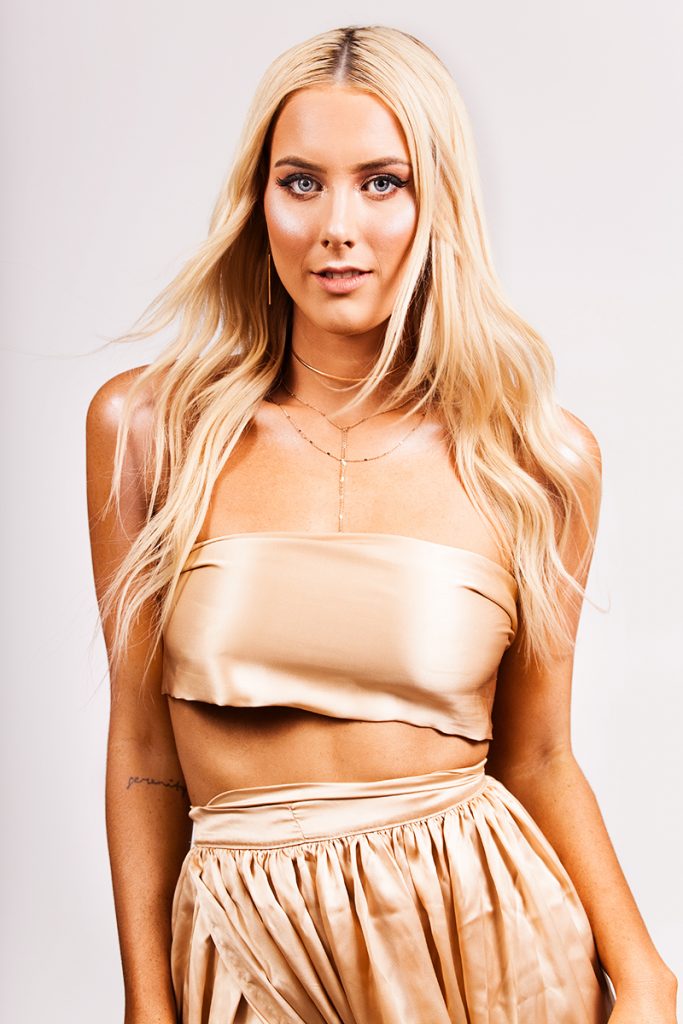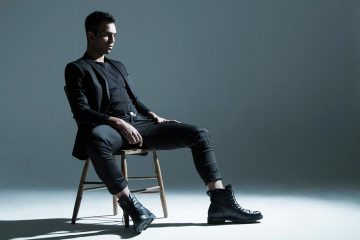The Beginner's Guide to Product Photography
If a image deserves a thousand words, a stunning product photo deserves a thousand internet site sees. Although I do not have data to back up that statement (yet), product photography can be very valuable to your ecommerce site technique.
To reach your target market members that favor purchasing online, you additionally need to provide your audience clear, attractive images of your products.
Yet product photography isn't as simple as aiming and shooting. Also one of the most basic products need the correct tools, lights, and room to generate lovely pictures that market buyers right from the acquisition web page.
6 Product Photography Tips (and Instances) for Taking Pictures That Sell
Right here are the tips, examples, as well as products you'll need to successfully photo and also market your items in a way that makes your site visitors and also leads want to convert.
1. Don't hesitate to utilize your smart device's camera.
This is the part where I'm supposed to persuade you to buy a premium, 50-megapixel (MP) cam with a 100-millimeter screw-on lens. But I'm not mosting likely to do that.
If you already possess a video camera that fits this description, benefit from it. But for lots of kinds of products, it's totally appropriate to fire product photos on a mobile phone.
Newer smart devices flaunt effective electronic camera lenses as well as settings that permit you to enhance your shots for the various types of light and also environments you could shoot in.
If you require more persuading, simply take a https://postheaven.net/a8bfzjv034/h2-the-noviceand-39-s-guide-to-product-photography-h2-if-a-image-is-worth-a look at Apple's Shot On An apple iphone project and also the images that have actually arised from it for many years such as this:
2. Fire from a tripod for photo consistency.
Before clarifying tripods, I'm obliged to begin with a cardinal policy: Don't prop your phone against something strong to intend your lens towards the subject.
It's just as well very easy for this makeshift configuration to slide about throughout the shoot as well as cause inconsistencies in your pictures' look. If you relax your camera on, claim, a pile of books, just make certain this setup does not alter throughout the shoot.
There's no harm in holding your electronic camera yourself when firing just a couple of product photos for your ecommerce website. Yet as your organization expands, and also you take more images of more items, it can be difficult to standardize the product's positioning in each photo when firing portable.
To make sure consistency across your items, you'll require a tripod. And the good news is, purchasing one isn't constantly the large, industrial-sized investment it made use of to be.
Here are 2 kinds of tripods to take into consideration.
Typical vs. Flexible
This is a practice tripod-- there are traditional tripods readily available for both cams as well as smart devices.
A versatile tripod can be controlled in a number of ways. You can flex its legs and also put it on different surfaces to obtain the angle you require.
Mobile Hold
There's usually a screw on the top of your tripod which affixes to your video camera to hold it in place. The underside of the majority of professional-grade electronic cameras has a screw hole just for this purpose, yet smartphones can use the complying with adapter:
The adapter holds the sides of your smartphone and also can screw right into either sort of tripod, allowing you to operate the cam manages with the phone display dealing with exterior and also towards you.
Once you identify which place you'll need, set it up before your product, and take into consideration placing 3 pieces of tape on the ground to mark where you 'd like to keep each leg of your tripod throughout the shoot.
3. Select all-natural light or man-made light.
Never underestimate exactly how certain kinds of light can boost (or prevent) your product photography. Bear in mind, customers obtain the most effective check out an product in person, where they can see whatever they need to before acquiring. The appropriate lighting plan aids you reveal those vital decision-making product attributes when all website site visitors have to go on is a photo.
A solitary lights configuration might not benefit every product-- a lights arrangement that benefits some products may damage the appearance of others.
There are two sorts of light you can select as your main light source: natural as well as man-made light.
All-natural Light
All-natural light describes sunlight-- straightforward as that. It's likewise known as "soft light" since the sunlight casts a larger, softer variety of light than, say, a light beaming directly on the product. Ecommerce product shots grow in natural light if:
The product is shot outside or suggested to be made use of outside.
The product is utilized by, worn on, or shot with a individual ( individuals often tend to look far better in natural light).
You're trying to stress the product's surroundings, as opposed to particular attributes of the product.
Right here's an example of a shot using all-natural light:
Artificial Light
Synthetic light includes candles, fire, as well as a lot more generally, light bulbs. It's also described as " difficult light" since it creates a smaller sized yet more focused light surface area. This type of light deals with products with physical details that need to be highlighted to impress an on the internet shopper.
As a general rule, stick to simply one type of light per photo-- all-natural or man-made. Including natural light to an unnaturally lit photo can soften a product that's suggested to festinate, as well as including synthetic light to a normally lit photo can hone a product that's suggested to look soft. You don't intend to enter your own method.
4. Load or bounce your light to soften darkness.
Whether you utilize all-natural light or artificial light, you'll require to decrease the shadows that any kind of potential hard light casts on the contrary end of a product.
There are 3 methods to do this:
Load Light
Consist of an additional, less-intense source of light to supplement your primary light. This additional light is called your fill light and is utilized as a counterbalance to soften the natural shadow your main light produces behind an item.

To do this, place your fill light contrary your primary light so your product sits between both lights.
Flashbulb Bounce Card

A bounce card, or reflector card, is a little card that " mirrors" or " jumps" the main light back onto the surface area below your product to decrease darkness.
Some bounce cards affix to the flashbulb of a specialist video camera lens to diffuse the light from the cam's flash. This card sprays a softer light onto the subject from above your set-- as opposed to straight at it-- so you do not have lengthy shadows trail behind the item you're firing.
Standalone Bounce Card
If you're shooting from a smartphone, a flashbulb bounce card isn't an choice, given that you don't have a physical flash you can affix it to. Instead, make your own standalone bounce card placed contrary your main light source.
For newbies to product photography, this bounce card can effectively replace your fill light, which counters the hard light from the video camera flash or lamp that's facing toward the front of your product.
5. Utilize a move or picture mode to stress the product.
There isn't one right way to position your product, lights, as well as jump cards-- they can transform dramatically relying on your background. But don't choose a history based upon what's easiest to produce. Histories must appear like just how you desire your purchasers to regard your product when viewing it online.
Take into consideration first whether you 'd like a white background or a more vibrant, real-world history. There's an easy means to accomplish each one.
White Background: Move
For white backgrounds, it's not as straightforward as establishing a table against white drywall. Also smartphone cameras can grab little imperfections on a white wall that you wouldn't see with the nude eye. To capture a best white history with no corners or acnes, make use of a move.
A sweep is a big flexible sheet of paper, whose lower work as the surface below your product and afterwards contours up right into a white wall surface behind the product.
On video camera, the sweep's contour is invisible, stressing essential product information and also allowing the item to have all of a website visitor's interest.
Real-World History: Portrait Setting
Dynamic, real-world histories are really appealing when shooting products that have a details usage or are being designed by a individual-- as you saw aware of the brief-case previously in this guide.
However, it's very easy for a real-world background to take the emphasis of the photo, making it uncertain which product in the photo you're really offering.
Provide your product deepness and also focus with picture mode, a image setting on many specialist video cameras, and likewise offered on lots of new smart devices. This setup blurs the history so the context of the product is clear yet not competing against the product itself.
Below is a very outstanding photo of a HubSpot pen taken in portrait setting on a Google Pixel 2 (I took this image myself). You can inform the pen sits on a workdesk with a computer behind it, however the pen is still the centerpiece for audiences:
6. Shoot a range of images.
My last ecommerce photography suggestion to you is to not stop at one photo per product. Just as your clients look, hold, make use of, as well as also try out merchandise in a shop, your website must shoot a variety of photos to imitate this very experience.
If you're shooting clothes, for example, record the garment of apparel alone-- that is, spread out on a white surface area-- along with on a mannequin whose shade contrasts the shade of the product.
After that, for additional images, have the clothes modeled on a individual, enabling you to take images of the product from the person's various presents and also angles.

Product Photography Set Up
Next off, let's summarize what we just received-- here's a checklist of quick product photography set up suggestions that you can describe as well as share on your team:
• Decide on a electronic camera-- whether or not that implies using your smart device.
• Obtain a tripod that helps your camera of option.
• Choose all-natural or synthetic illumination-- consider which option is best for your product as well as setting.
• Determine whether you'll load or bounce light.
• Select sweep or picture setting.
• Take a number of various pictures to offer your visitors range.
Begin With Your Product Photography
Don't feel required to purchase every tip and also piece of equipment at the same time. Use these product photography pointers progressively to see what makes your store look the most presentable, and also alter your strategy as your photography chops improve.